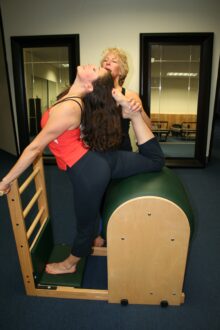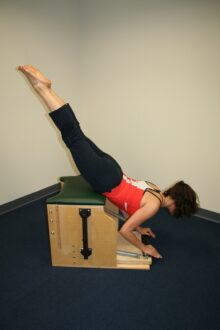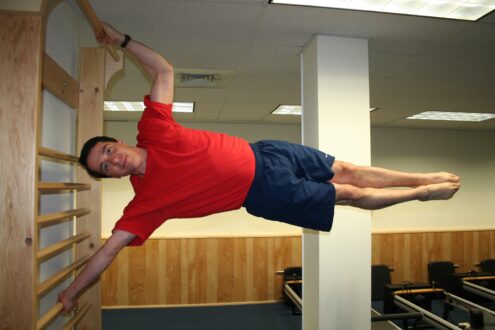By Zoey Trap, MS
Part C is only 10 minutes long, but for most instructors it is the most difficult part of the Session Format to program. With no order to anchor this section, the instructor is left with many options, and therein lies the trouble. There are so many things that need consideration when crafting a Part C. You must consider your student’s specific scenario:
- Individual needs
- Personal goals
- Fitness level
- Pilates experience
- The 4 Ss – where do their strengths and opportunities lie?
- Shapes in Space that they are good at creating and/or challenged by
- Personality and learning style
Wow! That’s a tall task. Consider the above elements, pick a priority, and stick with it for a while. You can enlist the student in what they want to work on and share your thoughts. This makes progress planned and measurable; and maybe you can even get your student to commit to homework (another accelerator to progress). For example, I have a student who wants to learn to do the full splits, so their Part C’s are organized around opening the hips.
Once you have a focus for Part C, the real planning can begin. Conduct a brainstorm session and write everything down that fits the focus. Next consider all the above elements. Now you’re ready to select. Circle the exercises on your list that you think best fit the focus and are appropriate for your student: remember your goal is to progress them, not overwhelm them. The final step in this process is to sequence the exercises. When sequencing, there are a lot of avenues you can take. You might choose to sequence from lower to higher positions, from stable to unstable, from simple to complex, etc. Factor in how you want the Part C to flow.
Give some thought to how you will teach a particular student during their Part C. This part of the Session Format generally slows down and becomes more conversational and richer. For visual learners you might need to demonstrate and provide imagery as this will be helpful. Auditory learners will benefit from clear and direct cues given at the right time in the movement pattern. These students will also benefit if you provide strong and appropriate vocal intonation as they will follow the energy of your voice; so, soften your voice for a rigid mover, strengthen your voice for a floppier student, and add a punch to the rhythm and dynamics when the going gets tough. The kinesthetic learner can be instructed using Shapes in Space, so give examples of “this feels like that.” Provide them touch and let them learn by doing and experimenting.
Of course, you want to bring some fun into the mix. What excites the student, how can you relate the work you are doing to his/her goals, and what will they gain from the Part C ? Happy students are students who are committed to the Pilates journey, so bring the fun factor and don’t make everything so serious.
Once you’ve completed your Part C, provide a complimentary Part D Ending, and your student is smiling and ready to walk out of the door!


To learn more about Part C Exercises, register for Masterminds Part C with Pamela Garcia and Zoey Trap. This workshop will dive deep into Part C sequencing to open hips and improve tech necks. Learn specific approaches to Part C, discover new exercises, and walk away with some great pre-programmed Part C options.
March 8 from 2:00-5:00pm EST (New York)
3 Peak Pilates® CECs



